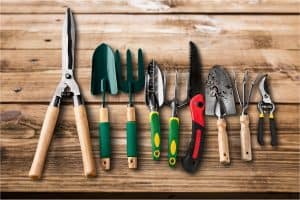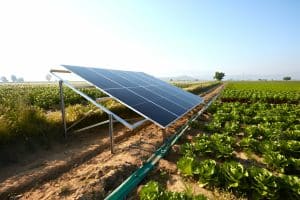People new to prepping will likely focus on canned goods and ready-to-eat meals when they start building their emergency food supply. There’s nothing wrong with that since these food items are the obvious choices. However, you should think further ahead and consider stockpiling survival seeds so you can start an edible garden in the future.
If you think this is a crazy idea, you should know that the “Doomsday” vault in Spitsbergen, an island in the Svalbard archipelago in northern Norway, stores over 930,000 varieties of food crops. The Global Seed Vault, which is located inside an icy mountain, was built mainly to deal with the “localized destruction and threats facing gene banks all over the world.” It’s also a good way to preserve the planet’s agricultural biodiversity in case of an apocalyptic event. In other words, we still have seeds to plant and grow in case shit hits the fan.
For preppers, stocking up on survival seeds is a way to be self-sustainable in the future. This is particularly important in case your emergency food supply runs out before things go back to normal.

1. Beans
Beans are one of the go-to foods of survivalists. Not only are they easy to grow, but they’re also rich in nutrients such as calcium, fiber, and vitamins A, C, and K. Furthermore, they’re very filling. It takes a mere 50 pounds (23 kg) of dried pinto beans to feed four people for one year.
Of course, you can grow other kinds of beans, including bush and pole beans. Bush beans can be harvested two months after planting. Pole beans take time to be ready but they provide a bountiful harvest for a longer period. Include as many types in your list of survival seeds to stockpile for the apocalypse.
2. Beets
Beetroots are cold-season vegetables that are easy to grow from seed. Beets are ready for harvest in just a couple of months after sowing. You also don’t need that much space to grow them. A few inches between each plant will do. Beets also need healthy and well-prepared soil that gets lots of sun. These vegetables can withstand frost and can even survive near-freezing temperatures.
Beets are excellent sources of manganese, potassium, iron, vitamin B9 or folate, vitamin C, and fiber. It is known for its many health benefits such as low blood pressure, and enhance blood flow.

3. Broccoli
Broccoli is a nutrient-dense vegetable that deserves a spot in your personal seed bank. It is high in antioxidants, minerals, vitamins, fiber, and other bioactive compounds. Broccoli is high in vitamin C, which is vital in boosting your body’s immunity. You want a healthy body that can fight off different illnesses, especially if you’re already dealing with a crisis. This vegetable also contains vitamin B9 or folate. This is an essential nutrient for pregnant mothers.
Aside from its many health benefits, broccoli takes only three months for it to mature. Once you harvest the head, the side shoots will grow into more heads thus extending the yield. Each seed needs just a square foot of soil to grow properly. If you don’t have a large tract of land, you can plant them in containers.
Also, broccoli can be eaten raw. You just have to wash it well before taking a bite. This is great if you don’t have the means to cook your meals considering all the chaos that might be happening around you.
4. Cabbage
Cabbage is commonly found in vegetable gardens mainly because it is easy to grow. That is one trait to consider when choosing the survival seeds you’ll be storing for emergencies. Another good thing about cabbage is that you can make the most out of each plant. One plant produces a considerable harvest. You can plant one every couple of weeks so you can have a continuous supply of this vegetable.
Cabbage is high in vitamins B6, vitamin C, and fiber. It can be eaten raw as part of your salad or slaw. You should also learn how to make kimchi and sauerkraut so you can enjoy your cabbage in a variety of ways.

5. Carrots
Bugs Bunny will likely survive the apocalypse because of his street smart ways, confidence, calmness, and a steady supply of carrots. Carrots are cool-weather crops that can be harvested even if the ground is covered in snow. It normally takes two and a half to three months before you can harvest their roots.
Carrots are rich in vitamin A, protein, carbohydrates, fiber, potassium, calcium, iron, and antioxidants. This root vegetable is known more for its beta-carotene content which helps keep your eyes healthy.
Carrots are pretty versatile, You can fry, boil, steam, or eat them raw. Raw carrots make your salad even tastier and healthier. Slice it into carrot sticks and eat them as is or with some kind of dip.

6. Corn
Corn, beans, and squash are collectively known in the gardening world as the “three sisters.” These three crops are the main stars of the traditional Native American method of intercropping. Make sure you include all three in your collection of survival seeds so you can take advantage of intercropping them.
Corn is packed with protein, iron, calcium, and, B vitamins. Its high fiber content helps with digestion. The crop supposedly helps prevent cancer, heart disease, stroke, type 2 diabetes, and obesity.
7. Eggplant
Not everyone is a fan of eggplants but that doesn’t mean you should not include them in your survival seed vault. When your emergency food supply dries up and it’s impossible to go on supply runs, you’ll be happy with any kind of vegetable that grows in your garden, eggplants included.
Eggplants can be enjoyed in different ways. They can be sautéed, fried, grilled, roasted, baked, and made into pasta. You can also turn them into baba ganoush or use them in stews, kebabs, pizza, and lasagna. Of course, you need to stock up on the ingredients to create the said dishes.
8. Kale
Kale is a superfood that belongs to the cabbage family and like its cousin, it is an easy vegetable to grow. The cold-tolerant vegetable takes only a couple of months to mature. Kale is also not that picky when it comes to soil. In fact, it can thrive in most soil conditions.
Like other vegetables, kale is nutrient-dense. It boasts of having lots of vitamin A, vitamin C, vitamin K, and folate. Other nutrients you can get from kale include calcium, phosphorus, potassium, zinc, lutein, zeaxanthin, and the omega-3 fatty acid called alpha-linolenic acid.
9. Lentils
Lentils deserve a spot in your collection of survival seeds to stockpile for a crisis simply because it’s been around since 8000 B.C. The underappreciated survival food was once known as a “poor man’s food.” However, it is rich in nutrients like protein and vitamins. Among the health benefits provided by lentils are lower cholesterol, improved digestive function, and lower blood pressure. Lentils also help protect you from diabetes, colon cancer, and constipation.

10. Lettuce
When disaster strikes, you’ll be hardpressed to provide food for the family. The longer it takes for you to find food, the nearer you are to starvation. That is why you should start building your emergency food pantry now. You also need to hoard survival seeds so you can start growing your own food before your supply runs out.
Lettuce is one of the fastest vegetables around. No, it won’t run by you like the Scarlet Speedster. What we meant was that the vegetable can be harvested and eaten as soon as their leaves are big enough. That’s sometime around 50 days or even earlier.
Lettuce has plenty of health benefits. It promotes bone strength, better vision, and improved sleep. Raw lettuce is made up of over 95% water so it helps keep the body hydrated. This will prove important when your water supply is running low.
11. Peanuts
Survivalists, outdoor enthusiasts, and preppers like to snack on nuts. They’re pretty healthy, especially as part of your favorite trail mix. Peanuts are rich in fiber, protein, and “good fats.” The lipids in peanuts help lower the body’s cholesterol levels hence the “good fat” tag.
There are a number of survival seed banks around the world. However, that doesn’t mean you can get some of these seeds and start your survival garden. You need to build your own seed stockpile so you can continue putting food on the table regardless of all the chaos happening around you in an apocalyptic scenario.

Aside from the survival seeds, you should also stock up on the tools and other items you’ll need to successfully start your future edible garden. If you’re already into gardening, you likely have all the tools you need. You just have to take care of the gardening tools properly so they’d still be useful when the time comes. Another option is to purchase another set and store them along with your other survival tools. Again, you should take care of all your tools so they will work properly in the future.

Ensure your survival following the breakdown of society by stocking up on survival seeds. If hunting isn’t an option, these survival seeds will enable you to create a large bounty of homegrown commodities to resurrect the human population or at least keep your family alive.
Check out Gentleman Pirate Club to learn more about survival gardening and other stuff that will help you survive the apocalypse.
























